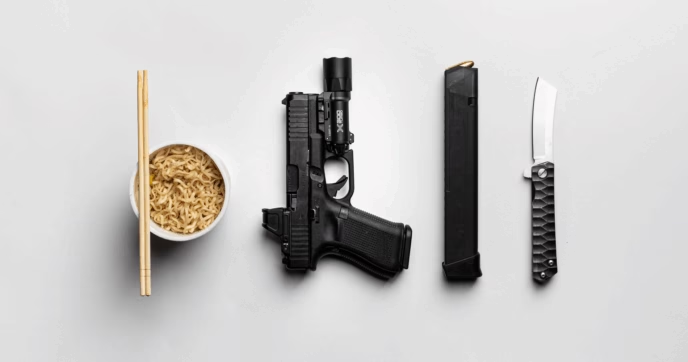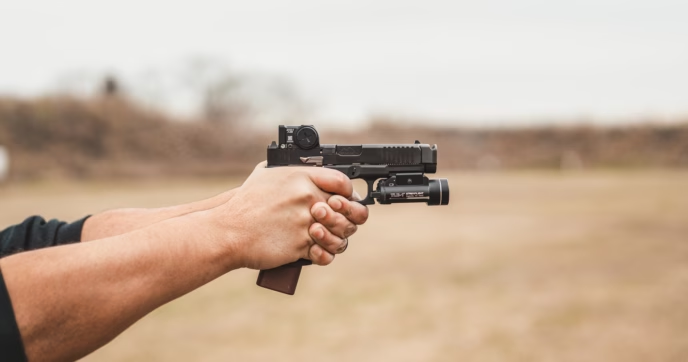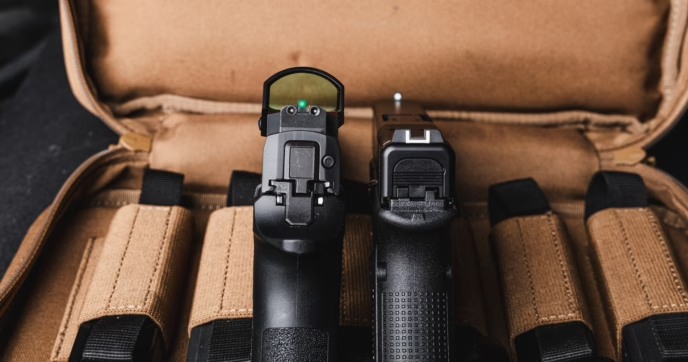AR-15s are among the most versatile firearms on the market. The number of calibers in which they can be chambered is vast and varied, but not entirely unlimited. Some rounds are simply too large to fit through the magazine well or ejection port, while others are incompatible with the AR-15’s operating system or geometry.
Nevertheless, the field of AR-15 calibers is sufficiently expansive that there is an option out there for every task and purpose.
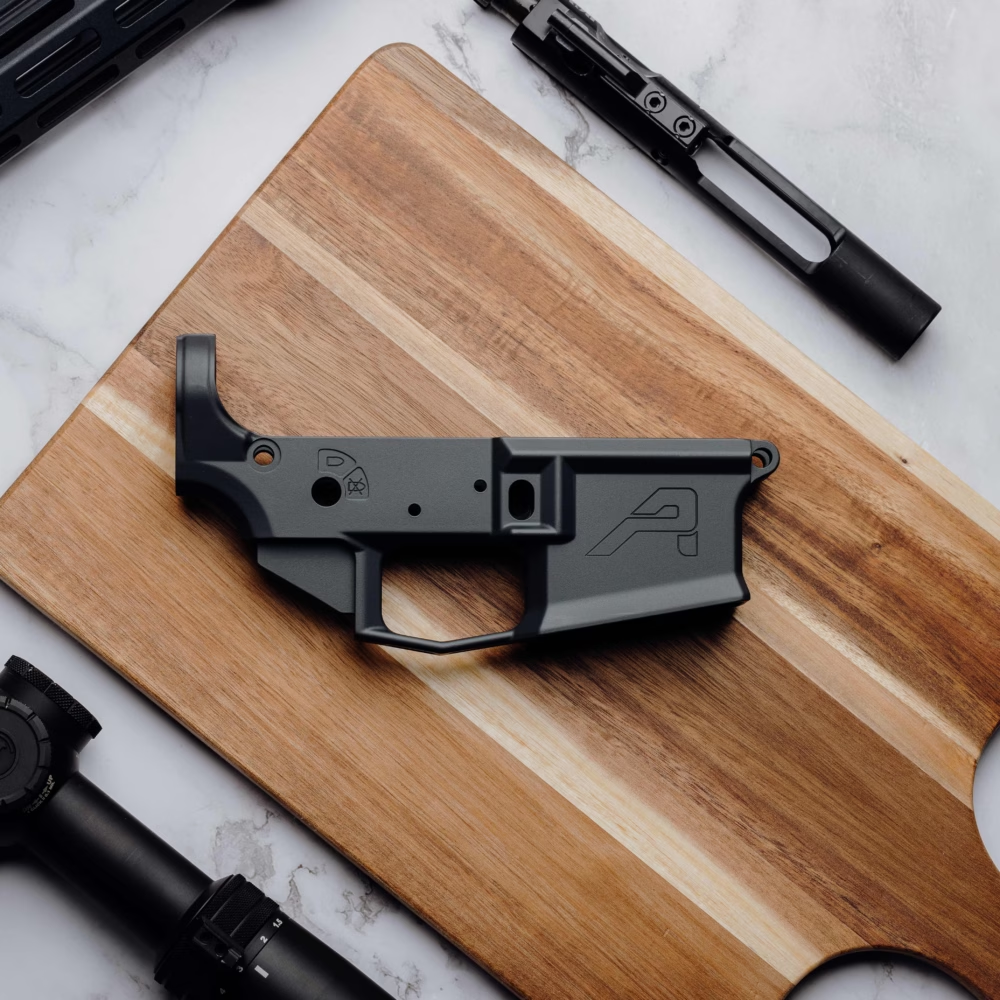
The Basics of Compatibility
For a caliber to be fully compatible with the AR-15 platform, it must be compatible with both the upper and lower receiver.
For AR-15 lowers, the primary limitation is the dimensions of the magazine well. If a cartridge is either wider or longer than the magazine well, it will not be possible for it to feed. This eliminates most full-sized rifle ammo, such as .308 Winchester and 6.5 Creedmoor. It also eliminates basically all long-action and belted magnum rounds—so you won’t be seeing many AR-15s chambered in .300 Win Mag or .338 Lapua Magnum.
Many of those cartridges are available in the AR-10 platform, though, which shares many of the same characteristics as the AR-15 and is often thought of as a larger version of the AR-15. The truth is a bit more complicated and is covered in depth in our article on AR-15 vs AR-10, but if you are looking for AR-15 ergonomics, controls, and function with a larger caliber like .308 Winchester, an AR-10 is a good place to start.
For the upper receiver, several key dimensions determine compatibility. The first and most commonly limiting is the ejection port. If a cartridge is too large, in either length or width, to fit out of the ejection port, then it will not be compatible with the upper receiver. Of course, there is some variability in the size of an AR-15 ejection port—anyone who has ever seen a 9mm AR-15 will note the smaller ejection port on most of those rifles—but due to the size of the receiver, there will always be an upper limit on how large an ejection port can be.
Other limits are primarily affected by cartridge diameter. A particularly wide cartridge may not leave enough room for a chamber of sufficient strength in the barrel while still being able to fit into a standard AR-15 barrel nut. Likewise, if the width of the case head exceeds that of the bolt face, it would not be possible to construct a functional AR-15 bolt for the cartridge.
However, for every rule, there is an exception. AR-15s can and have been chambered in cartridges as large as .50 BMG, although such a conversion requires such extensive modification that it is debatable if such a round is truly compatible, and if the resulting rifle is still really an AR-15.
Most designs that adapt an AR-15 lower receiver to use an oversized cartridge like an AR-15 make use of the lower receiver as a mounting platform and to hold the AR-15 lower parts, such as the trigger and safety. They then utilize a proprietary bolt-action upper that feeds either through an oversized ejection port in a single-shot manner or through a side-loading magazine attached to the upper receiver, bypassing the magazine well of the lower receiver altogether.
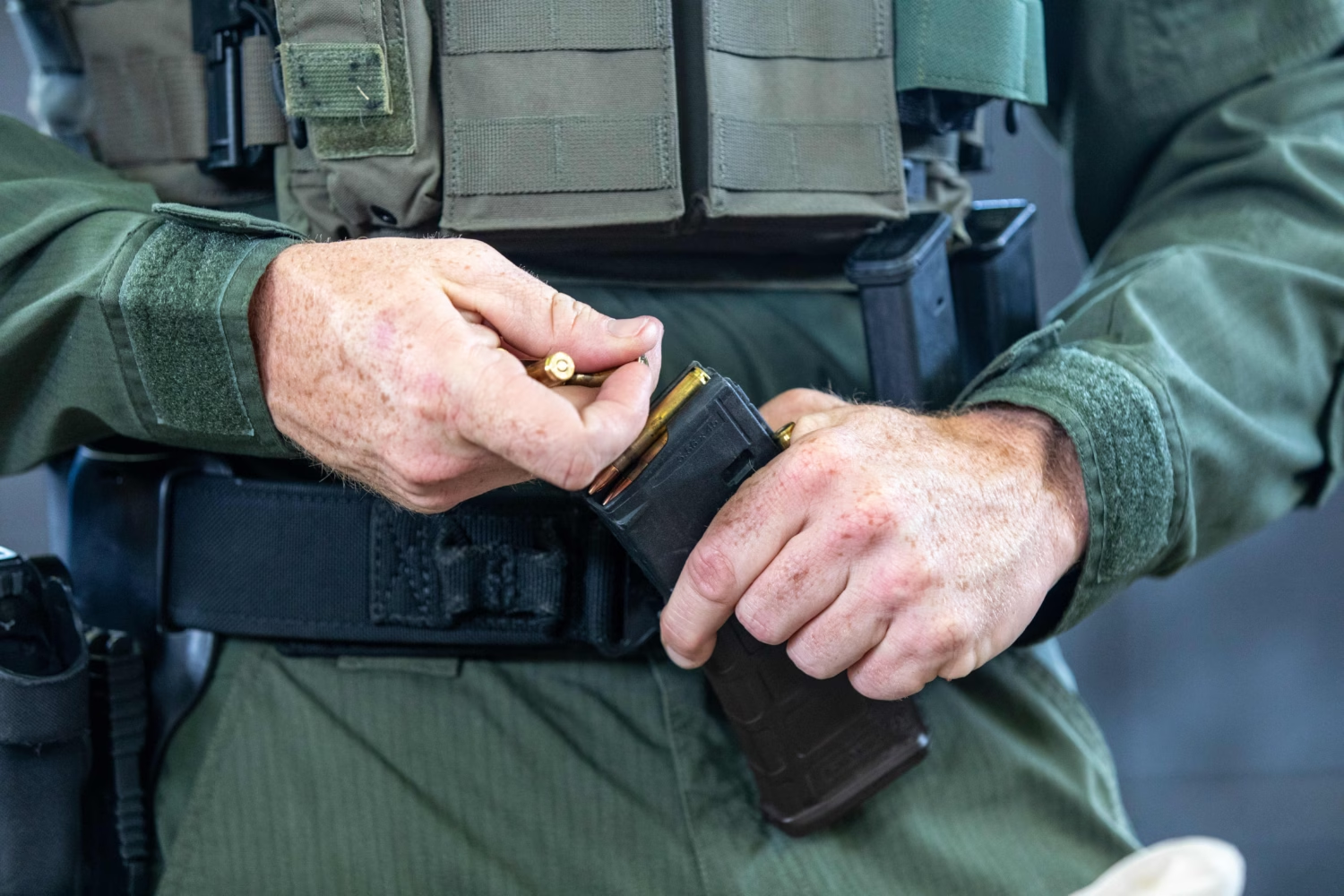
Standard AR-15 Calibers
When people ask, “What caliber is an AR-15?” the answer they usually get is 5.56x45mm NATO or .223 Remington. This is the original chambering for the AR-15 and by far the most popular. While the two cartridges are not technically the same, they are similar enough to be used interchangeably in most modern AR-15s.
In today’s world, though, while 5.56/.223 AR-15s are the most common, they are not the only cartridges that would generally be considered standard. Other exceptionally common rounds include the .300 AAC Blackout, which sacrifices some longer-distance performance for short-range efficacy, short-barrel optimization, and suppressed performance, as well as 9mm and .22LR options.
All of these calibers are easily had from a major manufacturer without requiring any particular effort to locate or personal customization to achieve.
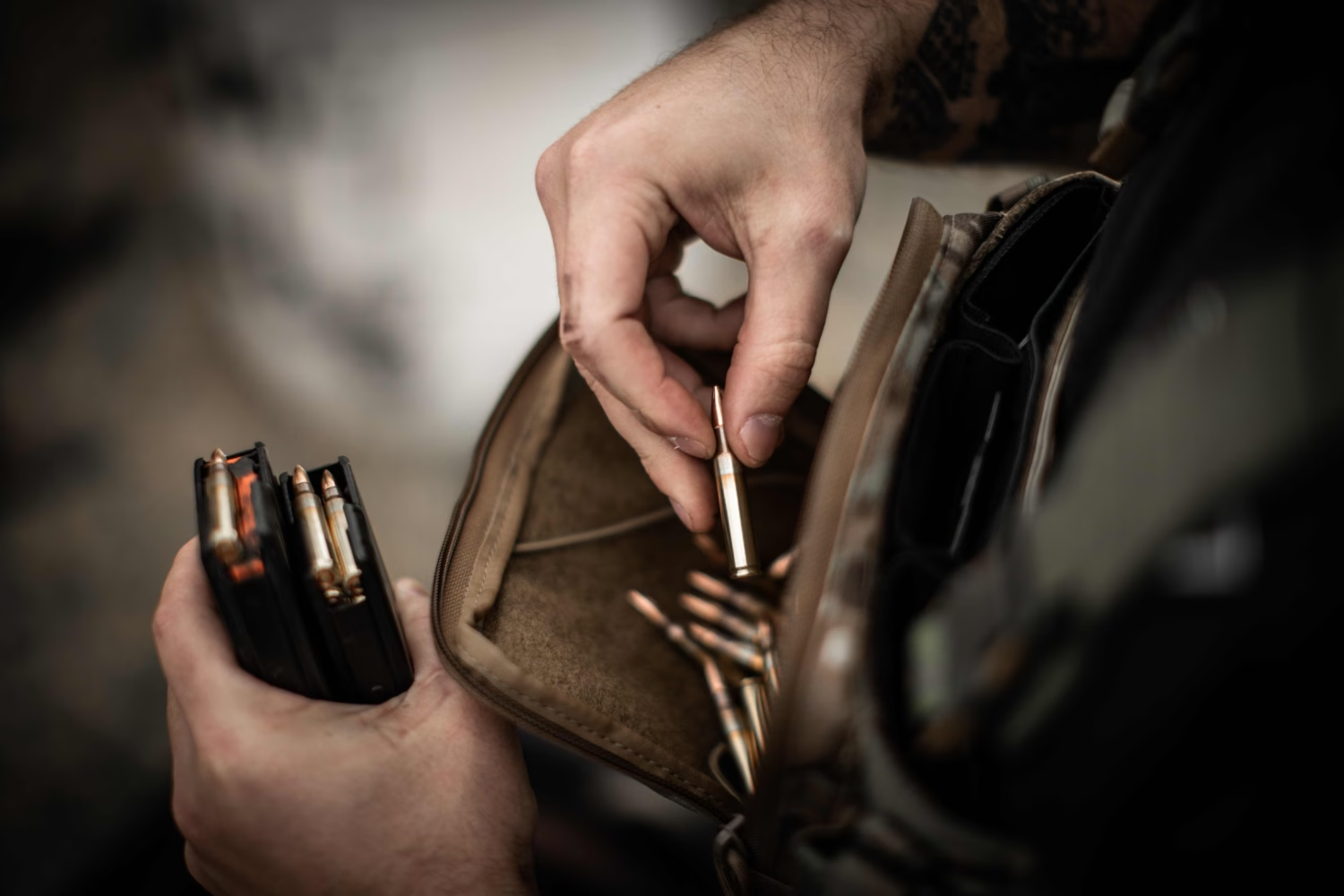
Uncommon AR-15 Calibers
Here we begin to branch into the vast assortment of cartridges that make the AR-15 such a versatile platform. While far from exhaustive, this list covers a wide cross-section of the many less-common calibers available for the AR-15, sorted according to their best uses.
Short Range
While the 5.56/.223 cartridge is highly effective across a variety of distances, certain applications call for a round that is optimized more toward the shorter end of the spectrum. These cartridges are intended to offer more effective terminal ballistics are distances of 300 yards or less, typically at the expense of nigh-parabolic drop profiles at extended ranges.
The most common and best-known is .300 Blackout, but it was developed as much for suppressed performance and parts compatibility as it was for short-range efficacy.
Lesser-known short-range heavy hitters include the 6.8 SPC and .300 HAM’R. The 6.8 SPC was first developed specifically to address the shortcomings of 5.56x45mm at short to medium ranges and deliver greater terminal effectiveness at those distances. While intended as a military cartridge, it was never formally adopted on any significant scale by any branch of the Armed Forces. The 6.8 SPC did, however, find some level of popularity on the civilian market, with rifles in the caliber still available from a small number of manufacturers.
Other short-range-optimized cartridges include hunting rounds like the .30 Remington AR and .350 Legend. These rounds were created to provide superior ballistics for hunting medium-sized game like whitetail deer, while still utilizing standard AR-15 receivers. The .350 Legend in particular was developed in part to address the legal restrictions of states that required straight-walled cartridges for certain types of hunting, creating an alternative to lever-action rounds like .30-30 Winchester.
Long Range
Just as 5.56 and .223 leave something to be desired in terms of short-range punch, so too do they come up lacking at truly long distances. Equipped with an optimal load and rifle, 5.56mm is effective out to around 700 yards, but with a more specialized round, the AR-15 is capable of much greater distances.
6.5 Grendel is one of the older long-range AR-15 cartridges, first introduced in 2003 by Alexander Arms. While hardly the first cartridge to try to adapt the AR-15 for long-range precision marksmanship, it was one of the first to gain relatively widespread acceptance.
The 6.5 Grendel offers significantly improved long-range characteristics over 5.56x45mm, boasting superior ballistic coefficient, drop profile, wind resistance, and terminal effectiveness at extended ranges. A full breakdown of the two cartridges is available in our article on 6.5 Grendel vs. 5.56 NATO.
Other more modern cartridges such as 6mm ARC and .224 Valkyrie build on the ground first broken by 6.5 Grendel. These long-range rounds utilize the latest in ballistic technological advancements to deliver faster velocities and flatter drop profiles than 6.5 Grendel, all while maintaining compatibility with standard AR-15 receivers.
High Caliber
As versatile as .223 Remington and 5.56 NATO are, some tasks simply call for a bigger bullet. If you need to hit something hard and leave a big hole, then these high-caliber powerhouses are what you’re looking for.
Big bore AR-15 rounds include .458 SOCOM, .450 Bushmaster, and of course, .50 Beowulf.
.458 SOCOM was first developed as a “one-shot stopper” for the AR-15 at the request of U.S. Special Operations Command. The goal was to maximize the amount of energy delivered to the target, and .458 SOCOM does that splendidly. The cartridge uses bullets ranging from 250 grains up to a whopping 600gr and is capable of generating up to 2500 ft-lbs of muzzle energy.
Not all big-bore AR-15 calibers have a military heritage, though. .450 Bushmaster was first conceptualized as a hunting round, with the goal of providing sufficient energy to hunt medium and large game while still utilizing an AR-15 platform. With a muzzle energy of around 2700 ft-lbs, there are few animals in the lower 48 it’s not capable of harvesting.
Lastly, for those for whom nothing but a .50-caliber option will do, is the .50 Beowulf. This massive cartridge pushes the AR-15 platform to the limit with a truly .50-caliber bullet with a weight between 300-400 grains. While relatively uncommon, it remains one of the few .50-caliber cartridges that can be used in a standard AR-15 receiver set.
Specialty AR-15 Calibers
While the aforementioned calibers are all available in factory-built rifles and utilize standard receivers, specialty AR-15 calibers do not.
These include things like .50 BMG, which requires a proprietary upper and does not use the lower receiver’s magazine well at all. As such, while technically a .50 BMG cartridge can be fired using a rifle with an AR-15 lower receiver, it’s debatable whether or not it’s truly compatible with an AR-15 since the resulting rifle isn’t even semi-automatic.
Other specialty cartridges include wildcats, which are cartridges that have been developed but are not commercially available from standard ammunition manufacturers. Wildcat cartridges are seldom available as factory options from rifle manufacturers, but can often be constructed using a custom barrel. Notable wildcats include .300 Whisper, which was one of the inspirations for the now-standard .300 Blackout.
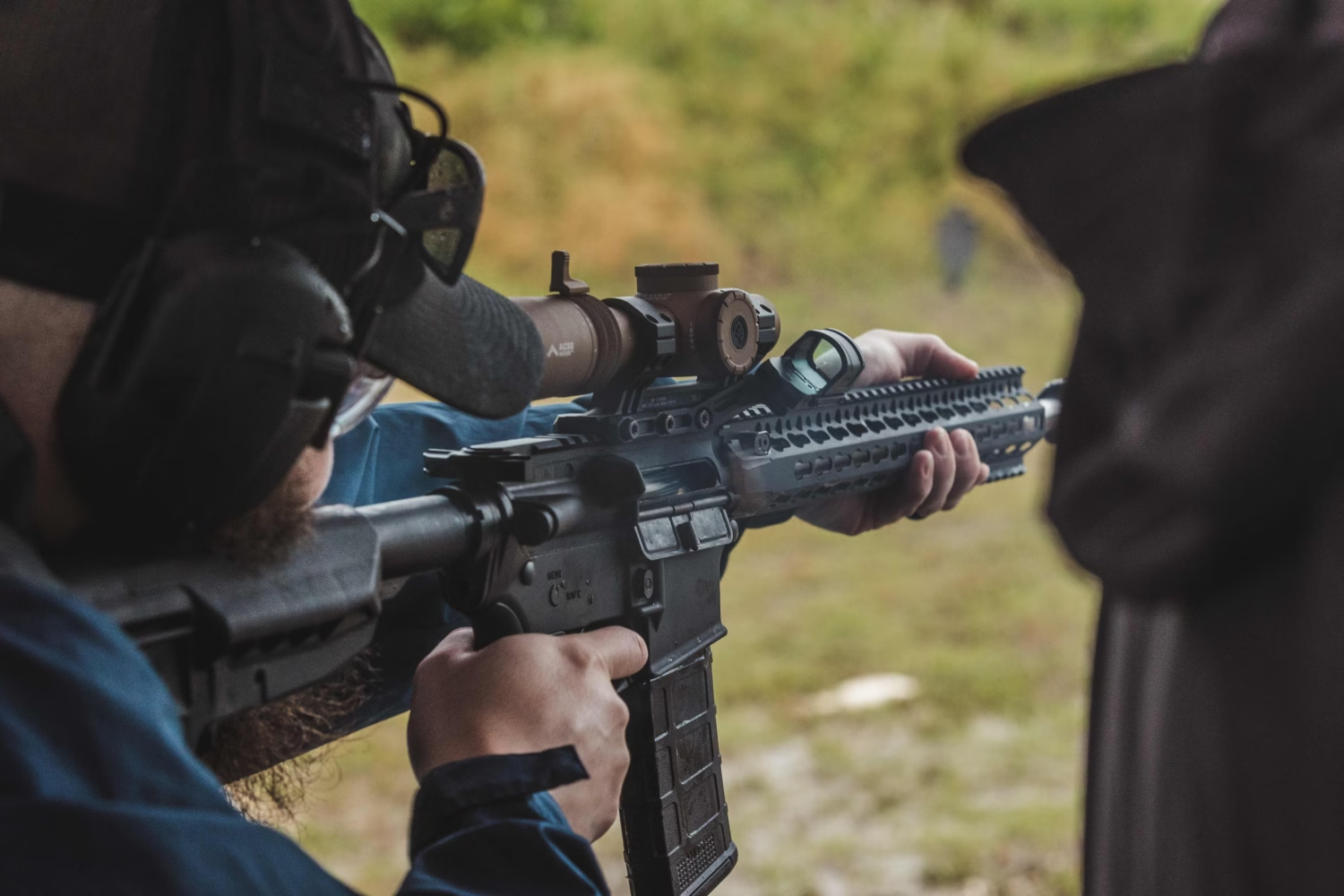
Conclusion
AR-15s have a huge range of caliber options available, but the list is neither infinite nor unlimited. AR-15 receivers certainly cannot fit any caliber, but they do have at least one option available for nearly any application.
